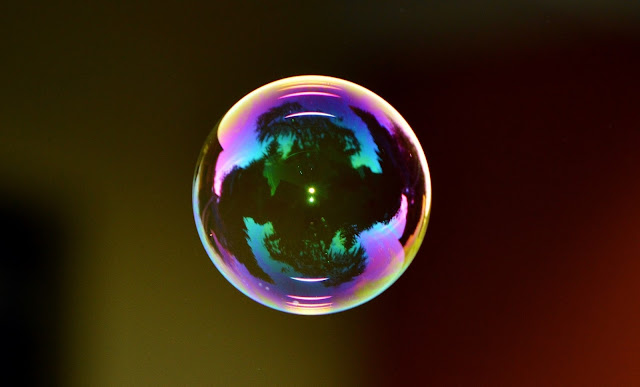After two papers on something that I did not receive an education for, I finally got a topic in photonics, my bread and butter to be. I started working as a part of the coherence coherence group of UEF in the summer of 2015 and my first task was to design and build an interferometer, which would be used to quantify spatial coherence.
 |
| Thin film interference. Physics is pretty, ain't it? |
Now, one might ask, what is spatial coherence? The idea behind this concept is simple: it describes how well different parts from a beams cross-section correlate with each other. If the correlation is strong, then we talk about high coherence and low when the correlations are weak. A very good overview of spatial coherence and its measurement can be found
here.
The usual way to measure it is to use the
Young's interferometer (a double slit experiment, variations of this are used in quantum mechanics), but there are some problems. First of all, a single measurement is not enough.
In order to measure the complete spatial coherence of the source, you need to move the pinholes across all possible combinations over the beam cross-section, which can easily be several tens of thousands of measurement points.
This is simply because the Young's interferometer samples the incident field only from the positions of the pinholes. Naturally, to get information on how the field correlates with itself at different points, you need many samples. Discretizing the wavefront so that it consists of only \(256\) points along one axis, you need a \( 256 \times 256 \) matrix to quantify all possible point pairs, which is \(65 536\) different measurements. And that's only along
one spatial dimension!
Thankfully, it doesn't matter which order the points are in, i.e. measuring the points \( (x_1,x_2) \) yields the same result as \( (x_2,x_1) \), so you can decrease the measurement time by half, yaay! But manually measuring 32 768 points would still take forever.
There are ways to do this really fast with micro-mirror devices, for example. Those devices substitute the pinholes with small mirrors and micro-electromechanics that are able to change the pinhole configuration in some microseconds. Then the limiting factor is the speed of your detector.
However, this does not remove the most limiting problem in the Young's interferometer. The pinholes let only a tiny fraction of the light through, so the sources have to be very bright if you want to be able to measure anything.
This is where alternative methods come in, and especially, the grating interferometer. It does the same thing as Young's inteferometer by first dividing the light to two and then recombining the beams at a camera. By moving the two copies across each other, it is possible to measure the complete spatial coherence.
So instead of picking parts from the beam cross-section and checking for their correlations, we can take the whole beam, overlap it with a copy of itself, and see how all of the overlapping points correlate with each other. Pretty neat if I say so myself.
The actual setup is quite simple. It features two gratings, the first one splits the beam and the second one recombines them. A camera is then used to capture images of the interference fringes.
The nice thing about this is that because we are using the whole beam, we don't lose so much of the light and it's possible measure even really dim sources. The maximum efficiency is set by the diffraction efficiency of the gratings, which can be up to 100 %. So it's possible to measure even really dim sources.
By M. Koivurova, H. Partanen, J. Turunen, A. T. Friberg
Published in Applied Optics 56 (18), 5216-5227
Links:





Comments
Post a Comment